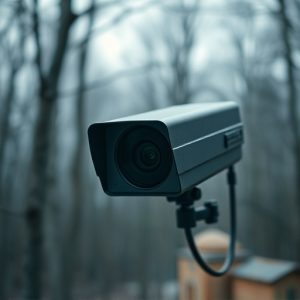AI-Integrated RF Detector: Uncovering Spy Cameras Effortlessly
The integration of Spy Camera Artificial Intelligence (AI) is revolutionizing security by enhancing…….
The integration of Spy Camera Artificial Intelligence (AI) is revolutionizing security by enhancing the detection of hidden cameras through advanced computer vision and machine learning. AI algorithms analyze surveillance data to identify patterns indicative of spy camera activity, enabling swift response to potential threats. To maximize this technology's benefits, a strategic approach should be followed: selecting compatible equipment, gathering diverse training data, developing and refining AI models, deploying them in real-time, and updating models continually for improved accuracy and adaptability. This ensures Spy Camera AI Integration effectively keeps up with evolving surveillance technologies.
Uncover hidden threats with an RF detector sweep—a powerful tool in the fight against spy cameras. This comprehensive guide explores the intersection of technology and security, delving into the basics of RF detector technology and the pivotal role of artificial intelligence (AI) in its advancement. Learn how AI integration enhances efficiency, accuracy, and speed in identifying hidden cameras, ensuring a safer digital landscape. Discover advanced techniques for successful implementation and stay ahead in the battle against covert surveillance.
- Understanding RF Detector Technology: Unveiling the Basics
- The Role of Artificial Intelligence in Hidden Camera Detection
- Step-by-Step Guide: Integrating AI for Efficient Spy Camera Sweep
- Advanced Techniques and Considerations for Successful Implementation
Understanding RF Detector Technology: Unveiling the Basics
RF (Radio Frequency) detector technology plays a pivotal role in detecting hidden cameras, especially with the growing sophistication of spy cameras and their artificial intelligence (AI) integration. This technology operates on the principle of scanning and analyzing radio signals to identify unusual patterns indicative of covert recording devices. By employing advanced algorithms, RF detectors can pick up on subtle frequency anomalies that conventional equipment might miss, making them powerful tools for security professionals and privacy advocates alike.
The basic function involves sweeping through various radio frequencies to detect active cameras. Modern AI-integrated systems can automatically adjust to different environments, filtering out natural signal fluctuations and noise to zero in on suspicious activity. This real-time data analysis allows users to pinpoint the location of hidden cameras with remarkable accuracy, ensuring that surveillance operations are effective and compliant with privacy regulations.
The Role of Artificial Intelligence in Hidden Camera Detection
The integration of Artificial Intelligence (AI) in hidden camera detection is revolutionizing security measures, especially with the rise of spy cameras. AI algorithms can analyze vast amounts of data from surveillance systems, identifying patterns and anomalies that might indicate the presence of a hidden device. By learning from known spy camera signatures and behaviors, these intelligent systems become increasingly adept at detecting even the most subtle variations in video feeds, making them powerful tools for security professionals.
This technology employs computer vision and machine learning techniques to scan through live or recorded footage, searching for unusual pixel patterns, irregular object movements, or peculiar light reflections—common indicators of hidden cameras. The AI’s ability to process and interpret visual data in real-time ensures that potential threats can be identified swiftly, allowing for prompt action to thwart any unauthorized surveillance attempts.
Step-by-Step Guide: Integrating AI for Efficient Spy Camera Sweep
Integrating Spy Camera Artificial Intelligence (AI) significantly enhances the efficiency and accuracy of RF detector sweep operations. Here’s a step-by-step guide to maximize its potential:
1. Identify Compatible Equipment: Begin by ensuring your RF detector is compatible with AI integration. Many modern detectors come with built-in AI capabilities or offer add-on modules for advanced features.
2. Data Acquisition & Training: Collect diverse data from known spy camera locations using the RF detector. This dataset will train the AI model to recognize unique signals emitted by hidden cameras. The more varied and comprehensive the data, the better the model’s performance.
3. Model Development & Training: Utilize machine learning techniques to develop a tailored AI model for identifying camera signals within the collected data. Fine-tune hyperparameters for optimal accuracy in detecting subtle variations in RF emissions.
4. Real-Time Implementation: Integrate the trained model into your detector’s software, enabling real-time analysis during sweeps. This allows for immediate detection and localization of hidden cameras, streamlining the entire process.
5. Continuous Learning & Updates: Regularly update the AI model with new data from ongoing sweeps to adapt to evolving camera technologies and improve its ability to detect previously unknown signals.
Advanced Techniques and Considerations for Successful Implementation
In conclusion, the integration of Spy Camera Artificial Intelligence (AI) offers a revolutionary approach to detecting hidden cameras. By harnessing AI’s capabilities, we can significantly enhance security measures and ensure a safer digital environment. The step-by-step guide provided offers a practical framework for implementing this technology, while advanced techniques highlight the ongoing evolution of this essential tool in navigating the complex landscape of hidden camera detection.


